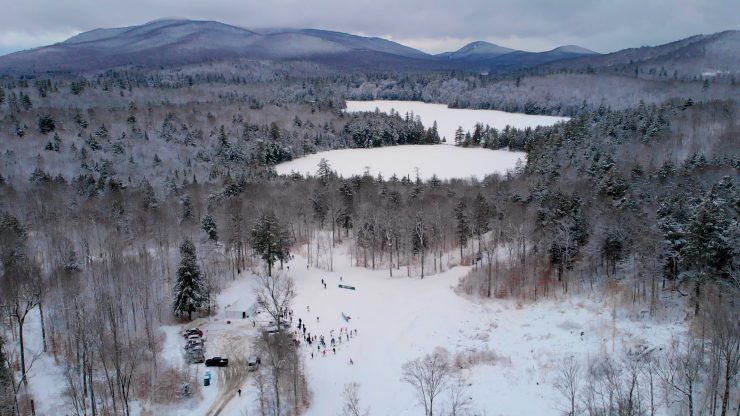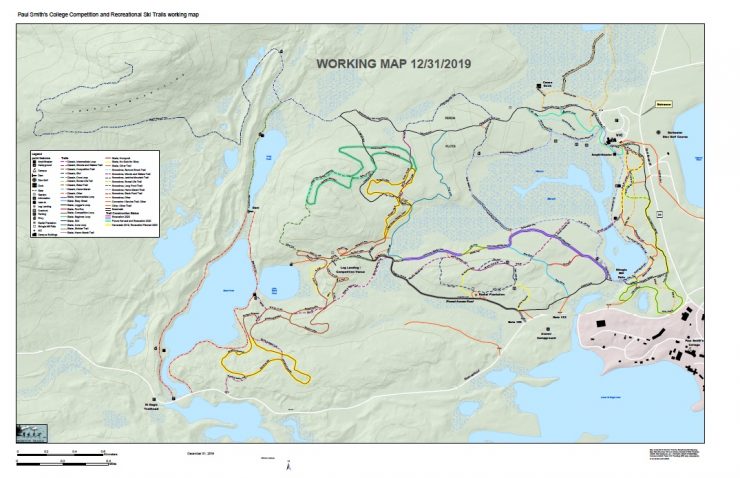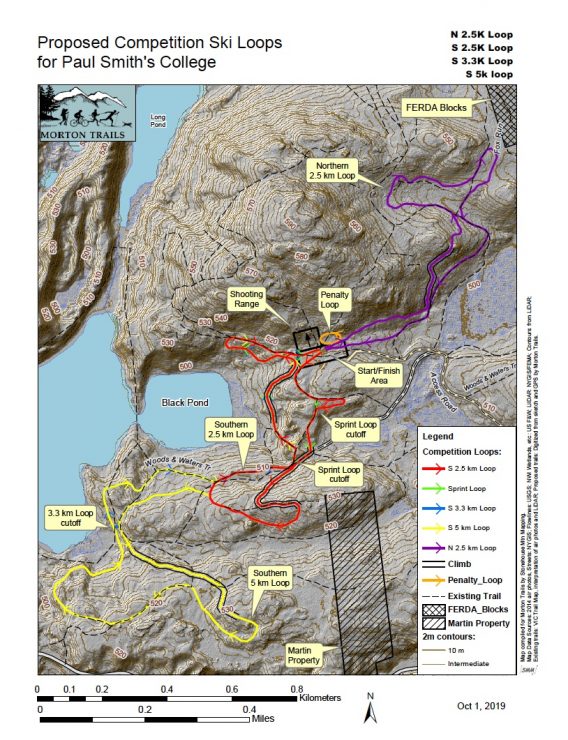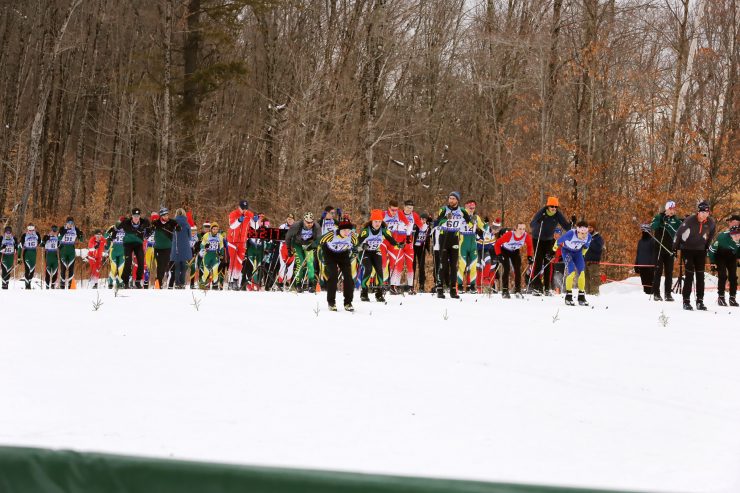
Running a small liberal arts college is big business. Stress over enrollment. Stress over capital improvements. Stress over staying relevant.
Paul Smith’s College in Paul Smiths, New York is a relative newcomer on the East Coast college scene; founded in 1946 and currently enrolling 745 students. One particular aspect Paul Smith’s makes it stand out – a massive 14,200 acre campus in the foothills of the Adirondack high peaks region. This is perhaps the school’s most unique asset. School administrators see their landholdings as one path to running a more sustainable higher ed business. The broad acreage of the campus is part of the school’s strategy to build infrastructure to attract potential students. In this instance, we are not talking about Paul Smith’s breaking ground on a shiny new student center with amenities like a five star hotel.
Paul Smith’s enterprising strategy to attract future student athletes includes building world class cross-country ski trails and a biathlon range. John F. Morgan, sports initiatives director at the college, shot straight when discussing the motivation for the school’s trail building initiative. “We are not doing this for public relations, we are doing this to entice student athletes to come to campus,” he said over the phone.
The school contracted with the storied Morton Trails to help vision the project and engineer the trails. Morton Trails came on board in October 2018, to begin the process of walking the campus grounds and marking a potential layout.


Morgan explained the campus, situated 25 miles from Lake Placid, sits in the Adirondack snow belt; the terrain is positioned to receive adequate snow pack. The college also boasts a 25 mile pre-existing trail system. In 2010, the college took over what is called the VIC, which functions as an outdoor center and is open to the public. The new project involving Morton Trails is geared towards creating modern International Ski Federation (FIS) homologated trails.
Since the inception of the project, 2.5 miles of trail have been completed. According to Morgan, another 3.5 miles of crafted trails are slated for construction in the next year. Plans for a biathlon range are moving forward as well. And for those seeking dryland training opportunities, Paul Smith’s budgeted for the construction of a modest paved rollerski loop.

On January 6, Paul Smith’s christened their race worthy ski trails with the PSC Bobcat Invitational. One hundred and ten athletes from 11 colleges competed. According to Morgan, those students racing at Paul Smith’s were the type of clients the college hopes to attract. Morgan understands the risk involved with investing in nordic sport, yet he asserts the college’s outlook is longterm.
“We are doing this, yes,” Morgan said. “Do I have a guarantee that that many people are going to enroll? No. I was standing next to the college president when she dropped the flag on a ceremony for the venue during the race — I looked at her and I said, ‘these are our clients, maybe not these kids, but the kids that follow them.’”
Paul Smith’s strategy to attract nordic sport student athletes also involves an official partnership with USA Nordic and U.S. Biathlon. USA Nordic calls its partnership with the college its East Coast Training Center.
Morgan also said four “grants” will be offered to USA Nordic and four to U.S. Biathlon student-athletes, respectively. “Grant”, it was explained, refers to full room and board, including tuition for a four year degree.
Part of the motivation for investing in the nordic sport facilities are the upcoming 2023 Winter World University Games in neighboring Lake Placid. Morgan envisions some of the grant recipients competing in those events. But Morgan acknowledged that the precise road map leading to a college degree from Paul Smith’s for an elite athlete will be a work in progress. Course work may involve early fall on-campus classes that transitions to online work for those traveling for competitions.
“That is what we are going to try and experiment with,” Morgan said. “Do we have the exact model of how to do it? No. But what we are doing is creating this sport and education culture where USA Nordic recognizes it, and U.S. Biathlon recognizes it. They send these kids in, and we assist them in finding a way to get them an accelerated education — one where they are on campus and they get a chance to experience college campus life and and they are not taking on-line courses when they are 30 or going back to college.”
Paul Smith’s has enlisted several former Olympians to advise its new Olympic sport initiatives. The group of five advisers include U.S. Biathlon’s Tim Burke, a native of Paul Smiths, and Billy Demong, current Executive Director of USA Nordic, who grew up nearby.
Jason Albert
Jason lives in Bend, Ore., and can often be seen chasing his two boys around town. He’s a self-proclaimed audio geek. That all started back in the early 1990s when he convinced a naive public radio editor he should report a story from Alaska’s, Ruth Gorge. Now, Jason’s common companion is his field-recording gear.



